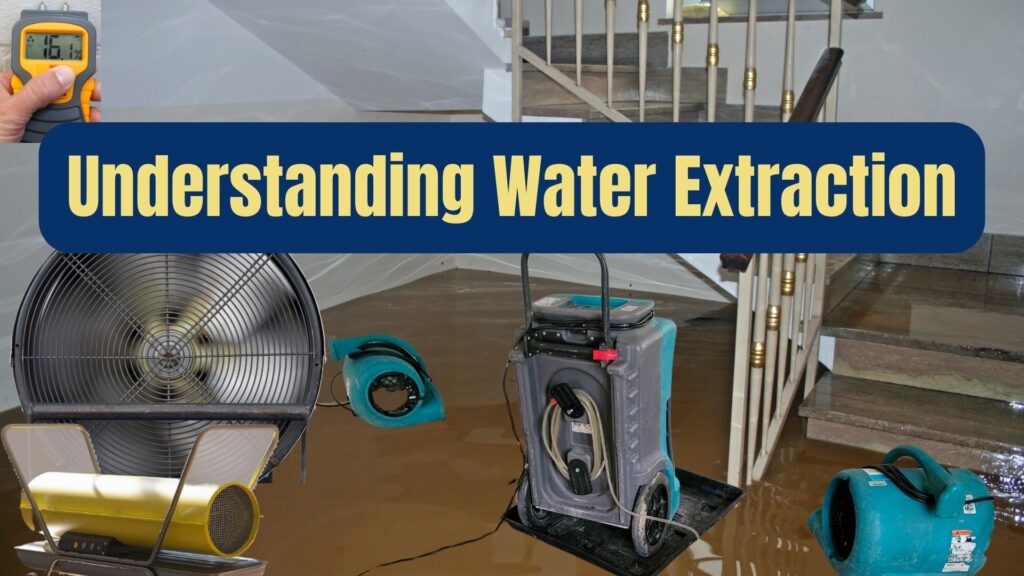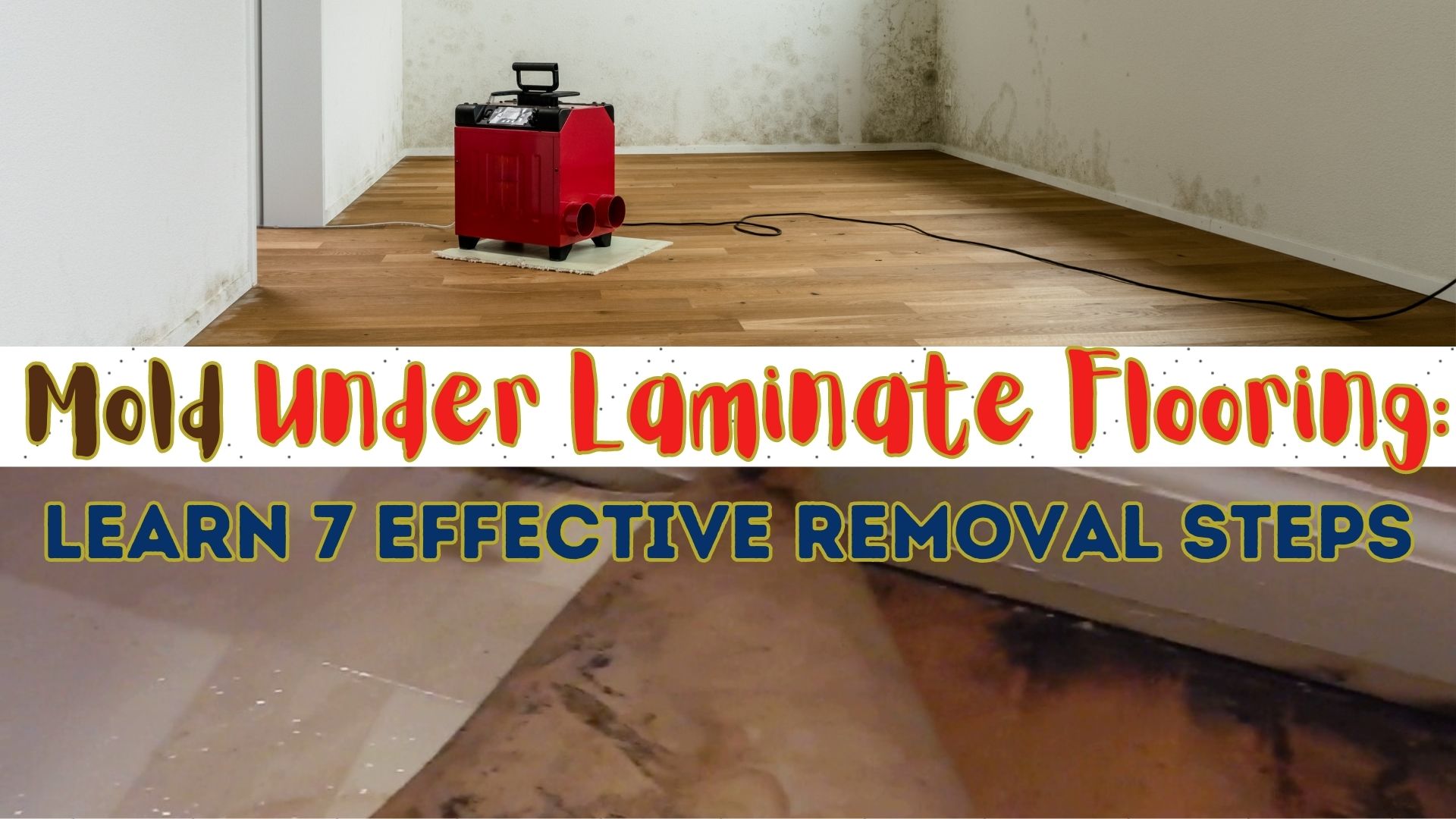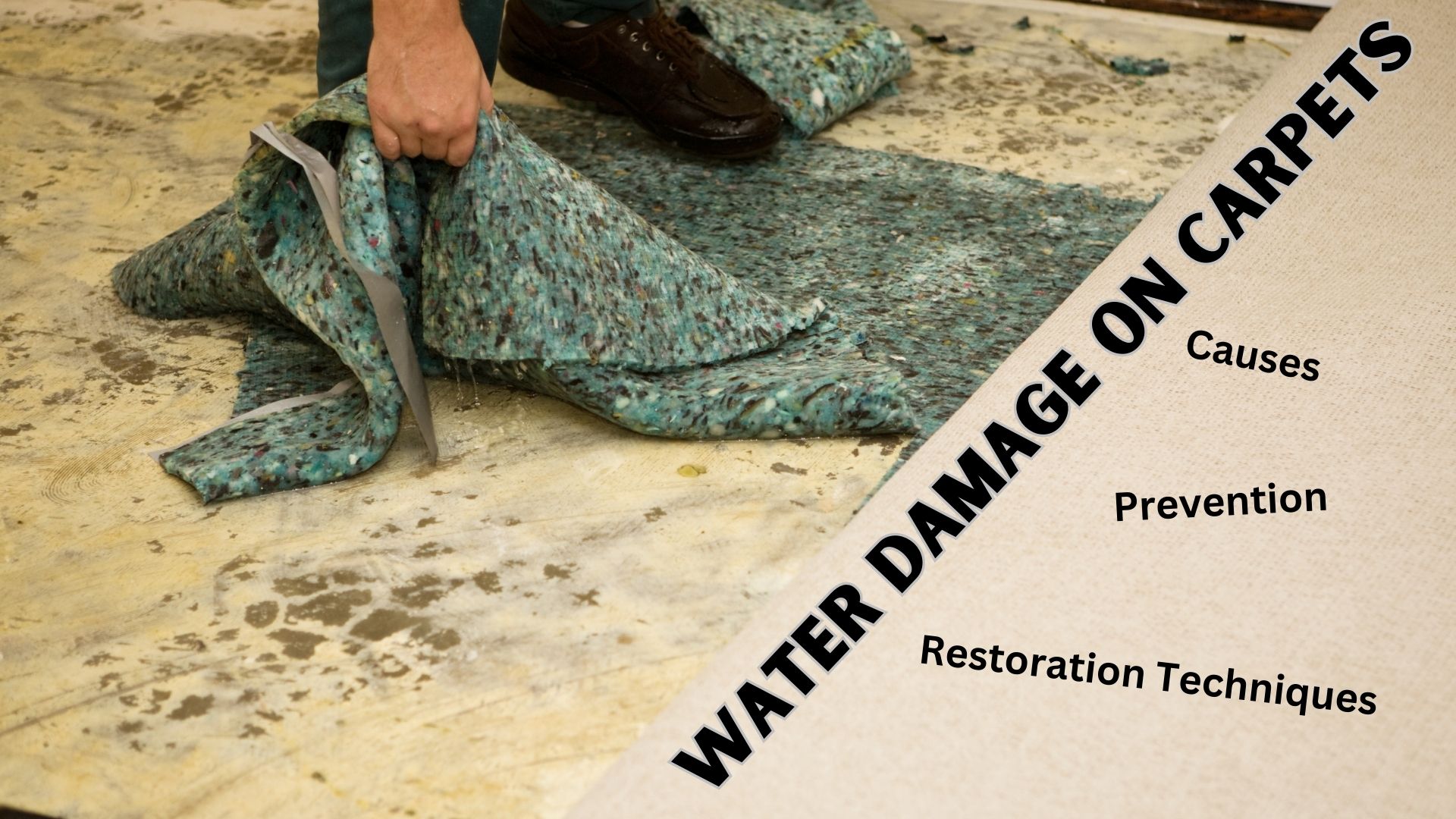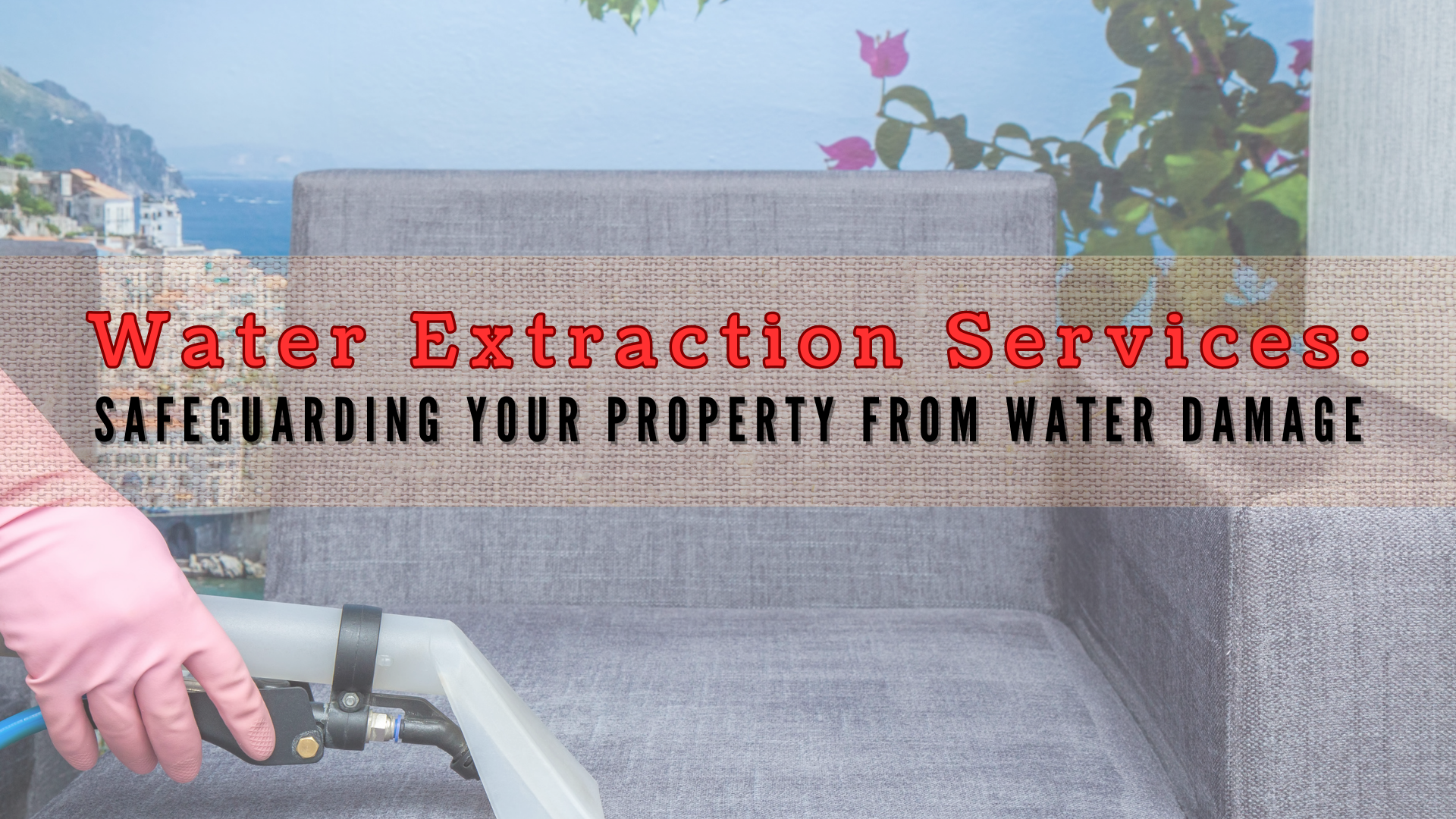Considering the amount of water can do to your property, water extraction is a necessary process that can make a lot of impact on restoring your home.
When water damage occurs in your home, time is very crucial. Water damage is the most common type of property damage because of its plenty of ways of occurring. It can happen due to numerous internal causes like a pipe burst, sewage backups, and appliance malfunctions. Water damage can also occur due to natural disasters like flooding and heavy rainfall.
Whatever the cause of the water damage is, water can do a lot of destruction to your home. Water can cause minor to significant structural damage, warping, and rotting. Porous materials, drywall, insulation, and wood can naturally absorb water, and when not extracted, it can ruin its purpose and cause secondary damage like mold growth. Mold can pose severe illnesses to you and your family.
Here you will know the water extraction process and how important it is in restoring your water-damaged home.
What Is Water Extraction?
Water extraction is the first and most crucial step of the restoration process. This process involves removing excess water and moisture in a water-damaged home or property. The main goal of this process is to minimize the damage after the influx of water. Water extraction not only minimizes damage but also lessens the risk of permanent damage to valuables, prevents mold growth, and restores the property to its pre-state condition.
Methods For Water Extraction
You can do water extraction in a few types of methods. But the first thing to do before performing the water damage repair is to find and stop the source of the damage. For instance, if the damage is due to a broken pipe, you must turn off the main water. When the source of the damage has been resolved, water extraction will soon be performed.
Effective water extraction methods can play a crucial role in safeguarding your home or business from the devastating effects of water damage. Here are some commonly used and efficient techniques:
Water Pumps and Extractors: Submersible pumps, wet/dry vacuums, and specialized water extractors are powerful tools designed to remove large volumes of water quickly. These devices are commonly used to eliminate standing water from flooded areas.
Dehumidifiers: After the bulk of water is removed, dehumidifiers help reduce moisture levels in the air, preventing further damage and inhibiting mold growth. They are especially useful for drying out saturated materials like carpets, walls, and furniture.
Air Movers and Fans: These tools promote air circulation, speeding up the drying process. By directing airflow across wet surfaces, they enhance evaporation and help dry out the affected areas.
Moisture Meters: These devices measure the moisture content of different materials, enabling technicians to determine the extent of water penetration and monitor the drying progress. This helps in identifying hidden pockets of water and ensuring complete drying.
Infrared Cameras: These cameras can detect hidden water sources behind walls, ceilings, and floors. They are invaluable in locating water intrusion points that may not be visible to the naked eye.
Wet Vacuuming and Mopping: For smaller water spills or localized incidents, manual wet vacuuming or mopping can be effective in removing water before it spreads and causes further damage.
Professional Water Damage Restoration Services: Engaging the services of trained water damage restoration professionals is crucial for larger or more complex water damage situations. Professionals in this field possess the expertise, practical know-how, and specialized tools necessary to efficiently manage water extraction and restoration processes.
Remember, when dealing with water damage, acting promptly is essential. Quick water extraction and thorough drying can prevent structural damage, mold growth, and other potential hazards, ultimately safeguarding your home or business from extensive harm.
Water Extraction Process: Learn 10 Steps
There are essential steps involved in performing water extraction effectively. Check the following steps:
- Safety Assessment:
Before starting any water extraction activities, it’s crucial to assess the safety of the environment. Identify potential hazards, such as electrical hazards or structural instabilities, to ensure the safety of the extraction team.
- Source Identification and Mitigation:
Locate and address the source of the water intrusion to prevent further water from entering the affected area. If it’s caused by a burst pipe, leaking roof, or any other source, take steps to stop the water flow.
- Water Removal:
Use water pumps, wet/dry vacuums, or specialized water extractors to remove standing water from the affected area. The goal is to eliminate as much water as possible to expedite the drying process.
- Moisture Measurement:
Utilize moisture meters to assess the extent of water penetration into building materials like walls, floors, and furniture. This step helps determine the areas that require focused drying efforts.
- Drying and Dehumidification:
Deploy dehumidifiers and air movers to facilitate the drying process. These devices help reduce moisture levels in the air and enhance the evaporation of water from materials.
- Air Circulation:
Ensure proper air circulation throughout the affected space to avoid stagnation and promote efficient drying. Position fans strategically to direct airflow across wet surfaces.
- Monitoring and Adjustment:
Regularly monitor moisture levels using moisture meters and infrared cameras to track progress. Adjust the equipment and techniques as needed to ensure consistent and thorough drying.
- Anti-Microbial Treatment:
If water damage has persisted for an extended period or if there’s a risk of mold growth, apply appropriate anti-microbial treatments to affected surfaces to prevent mold and bacterial growth.
- Restoration and Repairs:
Once the area is thoroughly dried and sanitized, undertake necessary repairs and restoration to return the space to its pre-damage condition.
- Preventive Measures:
Finally, identify and implement preventive measures to avoid future water damage incidents. This may include fixing plumbing issues, improving drainage systems, or using waterproofing materials in vulnerable areas.
Each water extraction situation may vary in complexity, so it’s essential to adapt the process accordingly to ensure comprehensive and successful water extraction and damage restoration. In cases of significant water damage, seeking assistance from professional water damage restoration services is highly recommended.
Can I Perform Water Extraction On My Own?
While it can be tempting to pull out a wet/dry vacuum and remove water by yourself, performing water extraction on your own is not a good idea. Water extraction requires proper equipment and techniques. Water can seep into areas of your home where you cannot easily see it. Without the right tools and enough knowledge, moisture can be left untreated and, without any interruption, can cause more damage, like mold growth.
Even if you have the proper tools in removing water, water extraction on your own is incredibly unsafe. This is especially the case when water damage is the aftermath of sewage backup or natural flooding, which involves contaminated water. This water contains bacteria and pathogens that can be hazardous to health when coming in contact with it.
Professionals at a water damage restoration company conduct this process with proper extraction equipment, knowledge, and techniques to remove water effectively.
What Is The Importance Of Emergency Water Extraction?
Water damage can cause severe destruction to a home, and when the unexpected happens, we should address the problem immediately to prevent significant damage. Time is of the essence. The longer the water sits in your home or property, the greater the damage will be. Worst, it can cause permanent damage to your home and even compromise its structural integrity, not to mention mold growth that can be harmful to humans. The sooner the water is removed from your property, the greater the chances of successful restoration.
Superior Restoration Water Extraction and Restoration
Our team at Superior Restoration is knowledgeable about performing water extraction and other processes of restoration. We only use tested, proven, and state-of-the-art equipment. Following proper steps is crucial so we won’t miss a thing.
We, at Superior Restoration, understand how stressful and dreadful water damage is. That is why we only have thoughts about providing you with only the best quality service. Our entire team will be by your side to help you if the unthinkable happens.
If you need water extractions and restoration services, don’t hesitate to contact our local office, Water Damage Murrieta. We offer 24/7 emergency service.
For further inquiries about our water damage restoration services, call us today!





